Way Back Wednesday: Could My Ancestor Have Been One of the Mysterious Melungeons? –
Until two weeks ago the Melungeons were so mysterious to me I didn’t even know they existed. I had encountered Mulattos in census records. I had come across Mestizos in history textbooks. However, Melungeon was a completely foreign word to me until very recently.
Last week I shared a picture of my great-great-grandfather Ozro Bales asking the question I had been asking myself for a while. What ethnicity was Ozro Bales? He certainly didn’t have the standard English and Irish look I would expect to see based on the extensively documented ancestry I have for him.
I do not believe there was any sort of secret parentage or adoption at play in this case. You can go back to the original post to see the pictures of other relatives that make me believe this is just a case of certain genes from an ancestor somewhere along the line showing strongly in his appearance.
*This post contains affiliate links.
Diversity Recognition Software and Applications
As I mentioned in our last episode of Way Back Wednesday, I posted a photo of Ozro Bales in a very large Facebook group asking for input and guesses on his ethnicity. Several comments suggested I try running it through an app that analyzes photos for ethnicity.
I was able to find a free app. I have no clue how accurate it may or may not be, but it is certainly fun to try various photos in the app. You can try the diversity recognition app yourself on the Kairos website. I’ve tried it on myself and all my kids. It was interesting to see the variations in percentages just between my four children. I noticed if we were smiling at all, it significantly increased the percentage of Asian listed for the subject. Without smiling, it considered us all around 85%-90% white, but the rest of the mixture for each of us was not as consistent.
I ran several different pictures of Ozro at various ages through the Kairos app. The only conclusion I could make from the results was that the app also considered Ozro to look significantly less white than other relatives I tried.
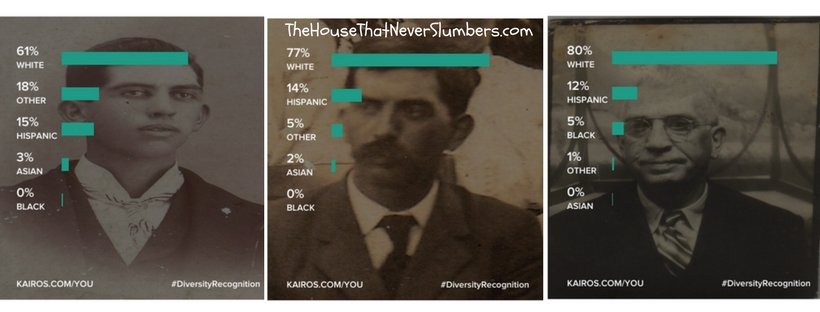 I tried the Kairos app on some of the other relatives who had a similar look to Ozro.
I tried the Kairos app on some of the other relatives who had a similar look to Ozro.
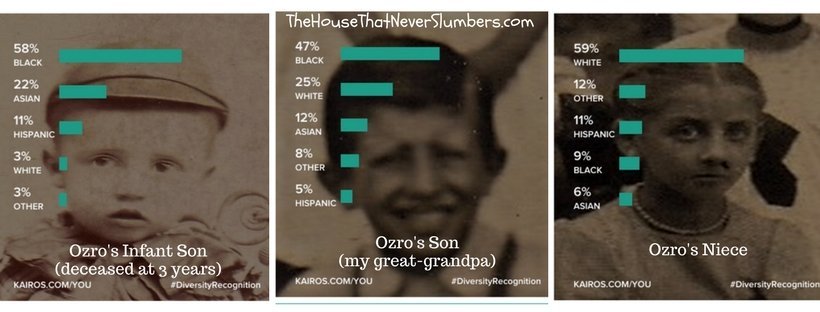
I wasn’t really satisfied that my results were giving me the specific answers I was seeking even though they were interesting.
The over 700 comments I received when I posted the photo of Ozro in that large Facebook group suggested any number of possibilities. Practically every country and every continent, except Antarctica, were mentioned as potential locations of origin. Several people mentioned Melungeon, and I didn’t think much about it, since I didn’t even know the meaning of the term. I thought it might be a long-forgotten country that existed in the past.
Then one lady commented saying she lives near Hancock County in Eastern Tennessee and that she believed his appearance was Melungeon. She told me the Melungeons have a very distinctive look that he had, and she wanted to know if he was tall. That got my attention because Ozro was very tall for men in that day. His father and grandfather were also very tall for men in that time period. Some of the men in this Bales line were about 6’4″ in a day and age when a man over 6-foot tall was practically a giant. I also knew Ozro’s grandfather was born in Tennessee.
There’s extensive research on this Bales line presented in Miriam Halbert Bales’ book We Pass the Words Along.
What is a Melungeon?
At that point, the Melungeon possibility had my attention enough to start my research into this mysterious culture. The Melungeon Heritage Association states:
Melungeons were considered by outsiders to have a mixture of European, Native American, and African ancestry. Researchers have referred to Melungeons and similar groups as “tri-racial isolates,” and Melungeons have faced discrimination, both legal and social, because they did not fit into America’s accepted racial categories.
Where did the Melungeons originate?
No one seems to have a clear answer for the origins of the Melungeon people. There’s a lot of speculation on their beginnings. Some claim they began with shipwrecked Portuguese sailors who intermarried with Native Americans. Some believe they are descendants of the Lost Colony of Roanoake. Some think they may be one of the lost tribes of Isreal. Some consider their ancestors to be those who came on Spanish expeditions and later lived among native tribes. Others believe they are the children of intermarriage between free-blacks and whites who were forced to deny their own heritage due to discrimination.
There are as many theories as there are shades of skin in the melting pot we call America. All may be true to some degree. Regardless of origin, the Melungeons are a multiracial subset of the population. The Melungeon Heritage Association notes:
Genetic studies have shown that Melungeons share genetic traits with populations in the Mediterranean, South Asia, and Middle East, as well as with northern Europeans, Native Americans, and African-Americans.
There are specific disease patterns that show up frequently in the isolated Melungeon population which are all more common in Meditteranean and Middle Eastern cultures. The Multiracial Activist has further information on these specific diseases in their post Melungeon Health Issues. According to DNA Consultants:
If You Have a [Melungeon] Match You Probably Also Have: Jewish and Native American ancestry and, possibly, also Sub-Saharan African and Gypsy. You may also be prone to Jewish and Melungeon genetic disorders, including anemias and familial Mediterranean fever.
The Jewish Connection
The Jewish connection is interesting to me because one time many years when I first became interested in genealogy I had searched for the meaning of the name Ozro. It’s an uncommon name, so I thought it must surely be significant. The only information I could find on it at that time was information suggesting Ozro was of Hebrew origin meaning “ox” or “strong like an ox.”
I dismissed that information at the time because I could find no evidence whatsoever of any Jewish connection in any of the documented lines. The Bales line itself was a predominantly Quaker line with extensive documentation, but there could always be Jewish influence coming from a maternal line.
You can see Ozro standing here behind his grandmother Nancy McMullen Bales.
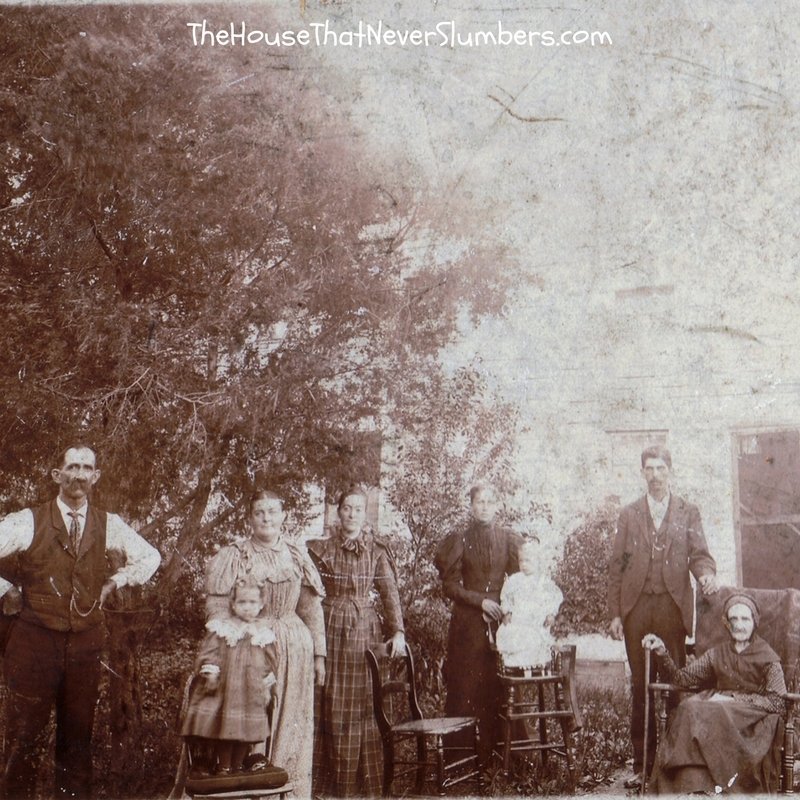
Melungeon Geography and Surnames
The Melungeon culture has typically been associated with the Appalachian region. These people were originally found in a strip of the country running from North Carolina, through Tennessee, and up into bordering areas of Virginia. There may also be concentrations in the Cumberland region of Kentucky.
Although other surnames may also be included due to marriages and so on, DNA Consultants lists the established Melungeon surnames as:
Adkins, Bean, Bell, Berry, Bolen, Bolling, Carrico, Carter, Casteel, Chavis, Collins, Cooper, Counts, Cox, Curry, Davis, Fields, Gibson, Goin, LeBon, Mozingo, Mullins, Ramey, Reaves, Robertson, Short, Sizemore, Starnes, White, Williams, Wyatt
I find it especially interesting that the name Mullins is included, since Ozro’s grandmother was Nancy McMullens. This may not be a fact of significance, but it could be note-worthy. It was not uncommon for different branches of a family to drop certain parts of a surname like the Mc or Mac to use a name that was more “American,” and spelling variations were extremely common in early history.
There weren’t always standard spellings like there are today. Before Social Security, birth certificates, marriage licenses, and other legal documents, no one cared if you spelled your name a different way every day of the week. In populations where literacy was not universal, individuals might be forced to rely on others (like the person taking the census) to determine the spelling of a name, so branches of the same family may be listed under multiple spellings.
Ozro’s grandmother’s surname of McMullen may be a clue. She was also born in Virginia. I don’t know exactly where in Virginia. However, she married a man who grew up in Northeastern Tennessee. Transportation was not easy in those days, so it’s very likely, she was from the region of Virginia bordering Tennessee which is the part of the state associated with the Melungeons.
Racial Discrimination and the Melungeons
Melungeon descendants apparently faced racial discrimination in the mountainous regions of Tennessee, North Carolina, and Virginia. This sadly caused many of these multiracial families to isolate themselves to Hancock and Hawkins Counties in Tennessee where they intermarried predominantly with other Melungeons. Individuals from these lines who migrated elsewhere generally married white people and are now indistinguishable from the general Caucasian population.
I find it interesting that I don’t think Ozro or any of the other relatives who had the darker skin and other features faced discrimination here in Randolph County, Indiana. My grandpa knew his grandfather Ozro. My grandpa never mentioned his father (who was also extremely dark-skinned) or his grandfather facing poor treatment. The photos I have show Ozro and his wife and children interacting freely among all types of people in Randolph County. I have no reason to believe he faced discrimination of any kind here.
Randolph County, Indiana Led the Nation in Equality and Integration
I don’t think many realize Randolph County and neighboring Wayne County have such a rich history in the fight for equality. Besides being a hotbed for abolitionist activities and participation in the Underground Railroad, Randolph County also had one of the first integrated schools in the nation – the Union Literary Institute established in 1846. It would be two more decades before public schools in Indiana admitted people of color. (Indiana Historical Bureau – Union Literary Institute)
Hiram Revels, the first black U.S. Senator, was a student at the Union Literary Institute. The first African-American elected to the Indiana House of Representatives, James S. Hinton, was also a student at the Union Literary Institute. The Union Literary Institute was also one of the first colleges to accept women.
Randolph County had the highest percentage of free-black settlers of any county in Indiana in the 1860 census. The free-black settlement in Greensfork Township surrounding the Union Literary Institute as well as free-black settlements at Cabin Creek (north of Modoc) and Snow Hill (north of Bloomingport) made three total. Although I cannot find a citation for it now, I remember reading at some point that there were only six free-black settlements in Indiana at that time, so it was notable that Randolph County housed half of that total.
You can also read my post Levi Coffin House: Hoosier History of Racial Harmony for further exploration of some of these topics.
So was Ozro Bales a Melungeon?
Was my great-great-grandfather a Melungeon? I can’t be sure. Even DNA testing would likely be fruitless. It would show percentages of various ethnicities, but there would be no way to conclusively link him to the Melungeon heritage because the genetic pool is so mixed.
I have suspicions that his grandmother or great-grandmother may have been linked to the Melungeon people. His grandfather’s birth in Tennessee and grandmother’s birth in Virginia offer us clues. His tall stature and dark skin and straight, black hair offer us clues. His name of possible Hebrew origin also offers a clue. But as is often the case in both genealogy and family lore, clues may be all we ever have.
If I am descended from the mysterious Melungeons, I would proudly embrace that. If I descend from some other random mixture of bloodlines, I would gladly embrace that as well. The genes of your ancestors are a part of you. The bloodlines of those who came before you are a part of you. Whatever your genes may be, wear them proudly!
So what’s the verdict of public opinion? Do you think my great-great-grandfather, Ozro Bales, could be a Melungeon?
Pin this!
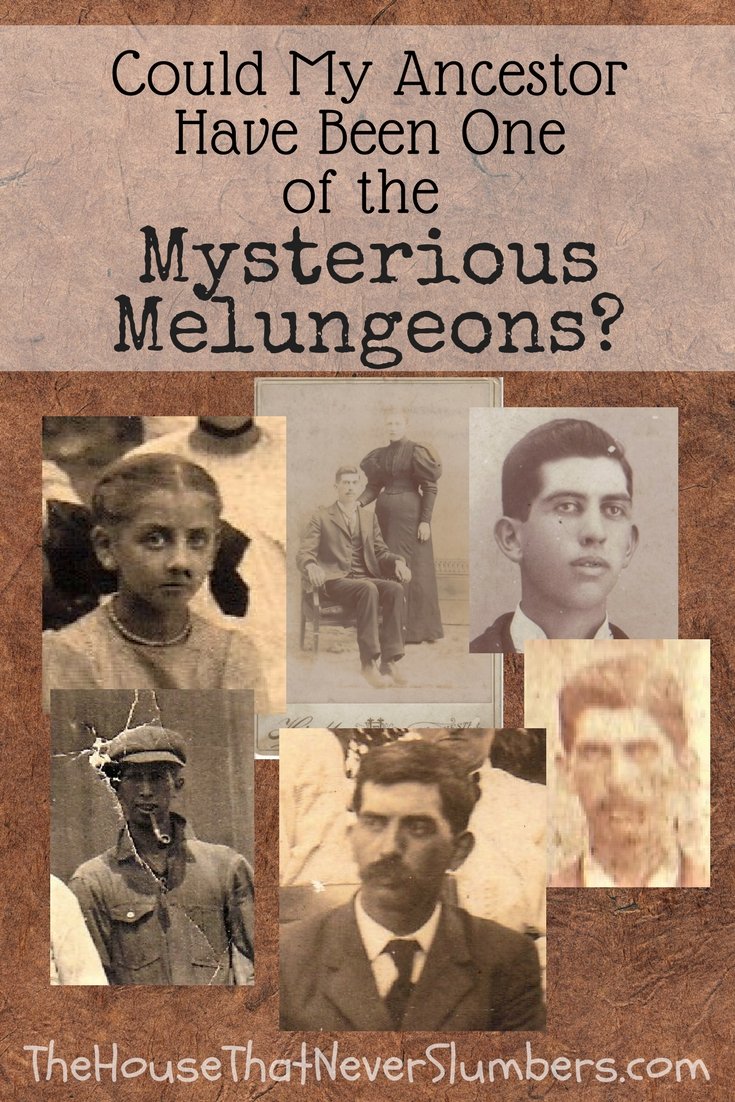
Other posts on Ozro Bales:
What Ethnicity Was Ozro Bales?
Ozro Bales Driving a Buggy Fast
Ozro Bales and Others at Carlos, Indiana
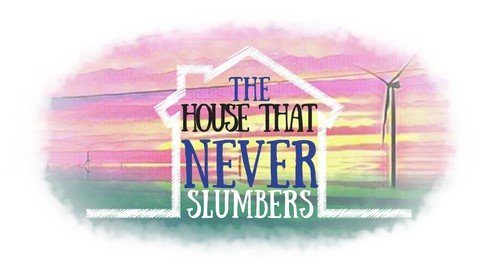

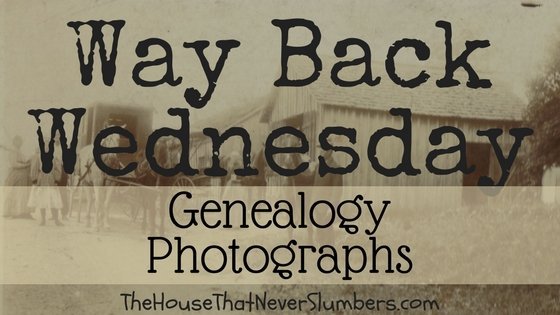




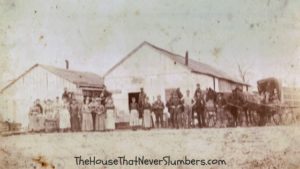
I stumbled across your post accident researching Melungeons. Both DNA test I have had done came back 36% Scottish Irish, 31% Iberian (Portugal Spain), the rest was a mixture of sub saharan, Italian, native American. Being from Wilkes County in the northwest corner of NC it makes sense. Momma had olive skin, blue eyes, dark brown eyelashes and eyebrows, straight brown blonde hair. I was told in school I had ‘N_____r’ lips. With blonde hair blue eyes. I’m pale in the winter but will tan a nice golden brown. Momma, however, would turn a beautiful dark olive.
Are there any other ways to determine if you have Melungeon heritage?
I think there are a few Melungeon DNA projects online, but I sent a request to join one and heard nothing back. I wonder if they are still active. My family has very full lips, and people often comment on it. My own DNA came back nearly all European, but it’s enough generations forward that I wouldn’t necessarily show significant percentages. Your ethnicity estimates are more diverse. Since Melungeon was a mixture, I’m not sure how they pinpoint who is and isn’t. I think they try to trace to the very few known surnames. I have McMullens in my line, and I know Mullens was one of the lines, but I’ve not been able to connect to the specific line from that county in Tennessee.
I have studied this subject pretty extensively. From the information you have provided I would say that it is close to 100% that part of your ancestry is classic Melungeon. In Ozro I see Sephardic Jew and Portuguese which is what the Melungeons always claimed to be (Portuguese). Interestingly, I believe this was the original Melungeon nucleus which probably arrived in North America in the late 1400’s or very early 1500’s due to the Spanish expulsion of Jews circa 1492. Did you ever hear the story of “nail soup”. I believe the Sephardic Jews from Portugal were the original “nail” hanging from the string to which were added eventually Native Americans, Africans and Europeans which became the more “latter day” Melungeons of the 1700’s and 1800’s. Most of the so-called “myths” about Melungeon origins, I believe, are absolutely true and is just another example of the truth being stranger than fiction sometimes. Anyway, it is an ancestry you can be extremely proud of. Thank you for posting the picture of Ozro and setting up this little forum. RB Robertson
Thank you so much for chiming in! I’m convinced Ozro has Melungeon roots, but my DNA results have been unhelpful in trying to prove that because they are so diluted this many generations removed from him.
This is a fascinating read. I learned of the Melungeons a couple weeks ago on pure accident. Since then I have Googled everything I can find about the mysterious people. I am from Southwest Virginia and about an hour away from Tennessee. I always thought my grandmother was of Native American Ancestry because of her looks. Now I’m wondering if she could have been A melungeon. My grandfather’s side was traced by a family member because we had a family reunion coming up. My cousin researched and traced our heritage back to Chief Powhatan. Chief Powhatan was my 12th great great grandfather According to her research. Now I’m interested in learning more about my grandmother’s heritage. There’s a lot of theories about where these people originated from. As you pointed out, some theories place them as the Lost Colony of Roanoke while others have different theories. Hopefully one day the theories can be traced and turned into fact. Growing up here in the Appalachians, I have always been fascinated with the history. Now I’ve stumbled across some interesting people of the Appalachias. Thank you for this article and for sharing photos!
Thank you so much for reading! Having Chief Powhatan as a direct ancestor is a very cool link to history. I have always been fascinated by the Lost Colony of Roanoke. That’s probably my favorite Melungeon theory. In the time since I’ve written this, I did DNA testing with Ancestry, and I really need to explore that avenue with the Melungeon research. Because they were at least triracial and I’m enough generations forward to seriously dilute the genes of any one ancestor, it would probably be difficult to pinpoint anything as being specifically Melungeon from my DNA though. Lower Midwest & Virginia Settlers is my main DNA community which is likely a major group for much of Appalachia. My Tennessee lines are very tangled.
This is so interesting. My grandmother was borned in Portsmouth, Virginia. I saw a younger picture of her many years ago and she was tall, brown skinned with beautiful black hair to her knees. She had only 1 brother who died as a teenager and she never talked about her family. Where do I start?
Thanks for reaching out. To find out more about your family history, start with what you know about your grandmother. Do you know her birth date and death date? Start there. You can probably find her on familysearch. org or on the free version of Ancestry. Anyone can start building a tree at Ancestry, but some records are only accessible with the paid subscription. I’ve used the free version for years.
Amanda, a researcher of 30+ years teaching beginner genealogy classes I reccomend, always start with yourself.your parents, then grandparents. Use birth, death, marriage records. Census records, city directories, tax records. Records that give names and dates. Obituaries may list spouse, children, siblings and parents. Dig and enjoy.
Thank you for the tips! After many years of paper genealogy, I finally gave in and tested with Ancestry hoping to get past a couple of brick walls that were unbreakable on paper. I’ve been able to verify all my 3rd great-grandparents and most of my 4th great-grandparents with DNA. There were no DNA surprises in my recent ancestors, but I did find a couple of lines farther back where the surname does not match the DNA because a couple of my ancestors ended up taking the surname of a stepfather. Those were interesting finds, and the DNA matches gave me the edge I needed to finally solve those. Moving forward, it’s nice to have both the paper trail and the DNA to complement one another.
Your Nancy McMullen probably descends from Eli McMullen from Scotland. Eli had several boys that came to the U.S.
I haven’t worked on the McMullen line recently, but I do believe that was my suspicion as well when I was looking at it.
I find this very interesting. I remember Ozro only as an older man with pure white hair. I don’t remember observing that he had darker skin, but then I was just a kid and kids don’t pay much attention to skin color. I do remember Ralph having darker skin. It does also seem curious to me that just certain members of the family had darker skin and the others rather fair. Not like the blend of skin colors that you see in mixed races today.
I enjoy your Wednesday genealogy posts very much. Thanks for doing them.
It’s so good to hear from you! I’ve also noticed he didn’t have the darker skin when he was older. I was surprised when the diversity recognition app considered the picture of him in his later years to show the highest African percentage, since he wasn’t dark in that one. That white-haired picture of Ozro reminds me a lot of your dad and actually of my dad too now that his hair is silver. I think Ozro and the other darker relatives must have just tanned really well. Once he was older he probably wasn’t out in the sun very much. One time when I sent a girlhood picture of Hilda (the niece with the dark skin) to one of her descendants, she could hardly believe it was her grandmother. Her grandmother never had dark skin when she knew her. When I look at the eyes of Ozro’s grandmother Nancy, they appear to be the same dark, sunken eyes, so it makes me wonder if she too would have been much darker like Hilda, Ozro, and Ralph in her younger days.